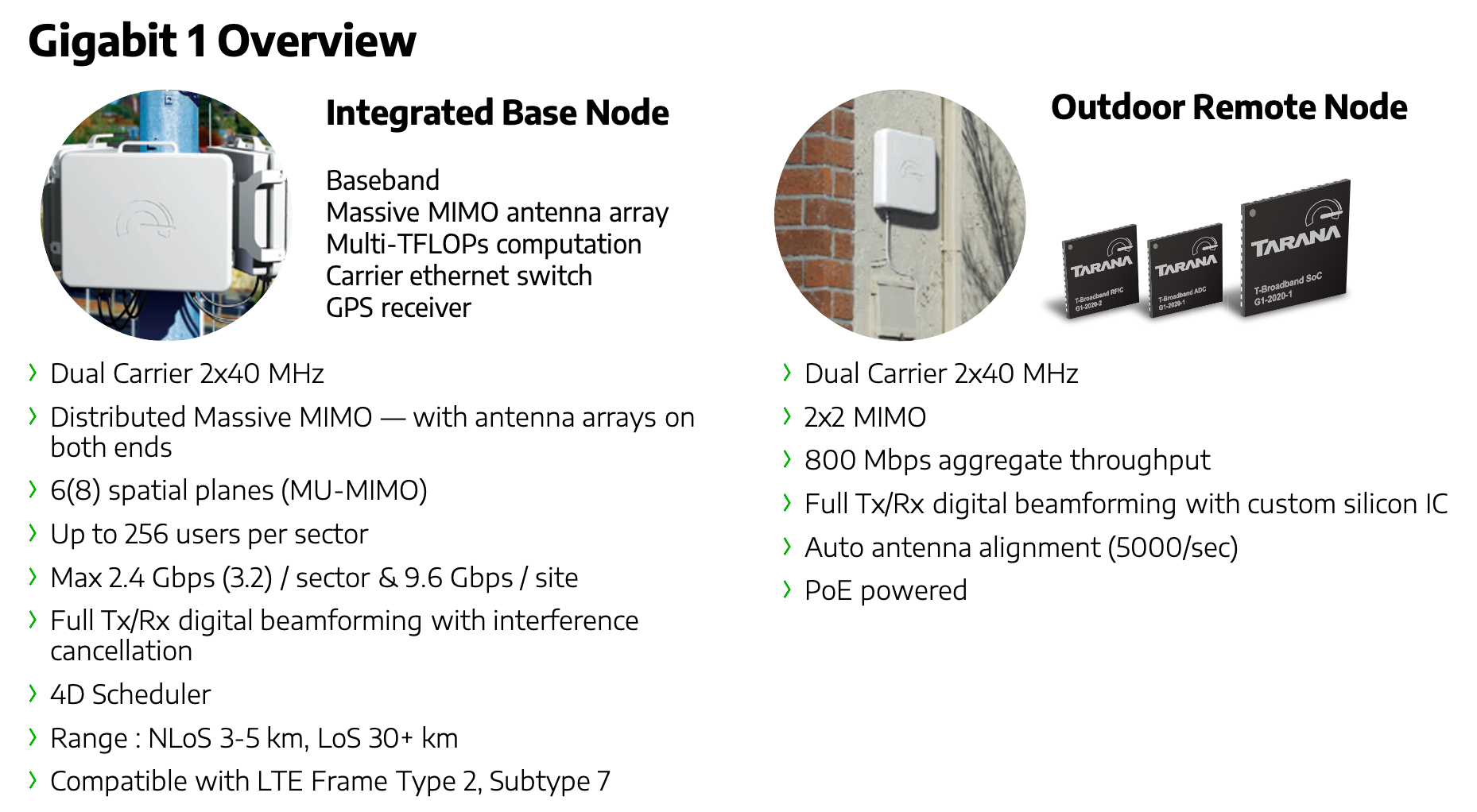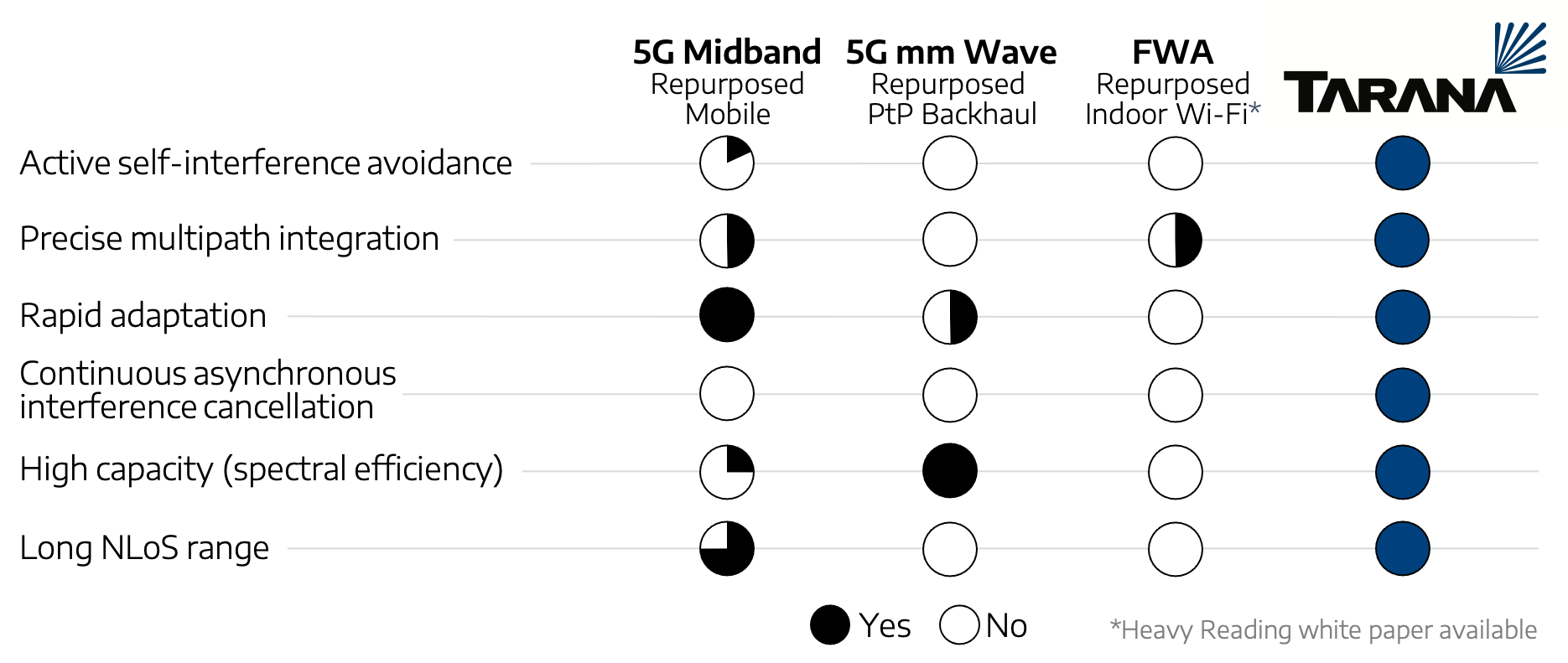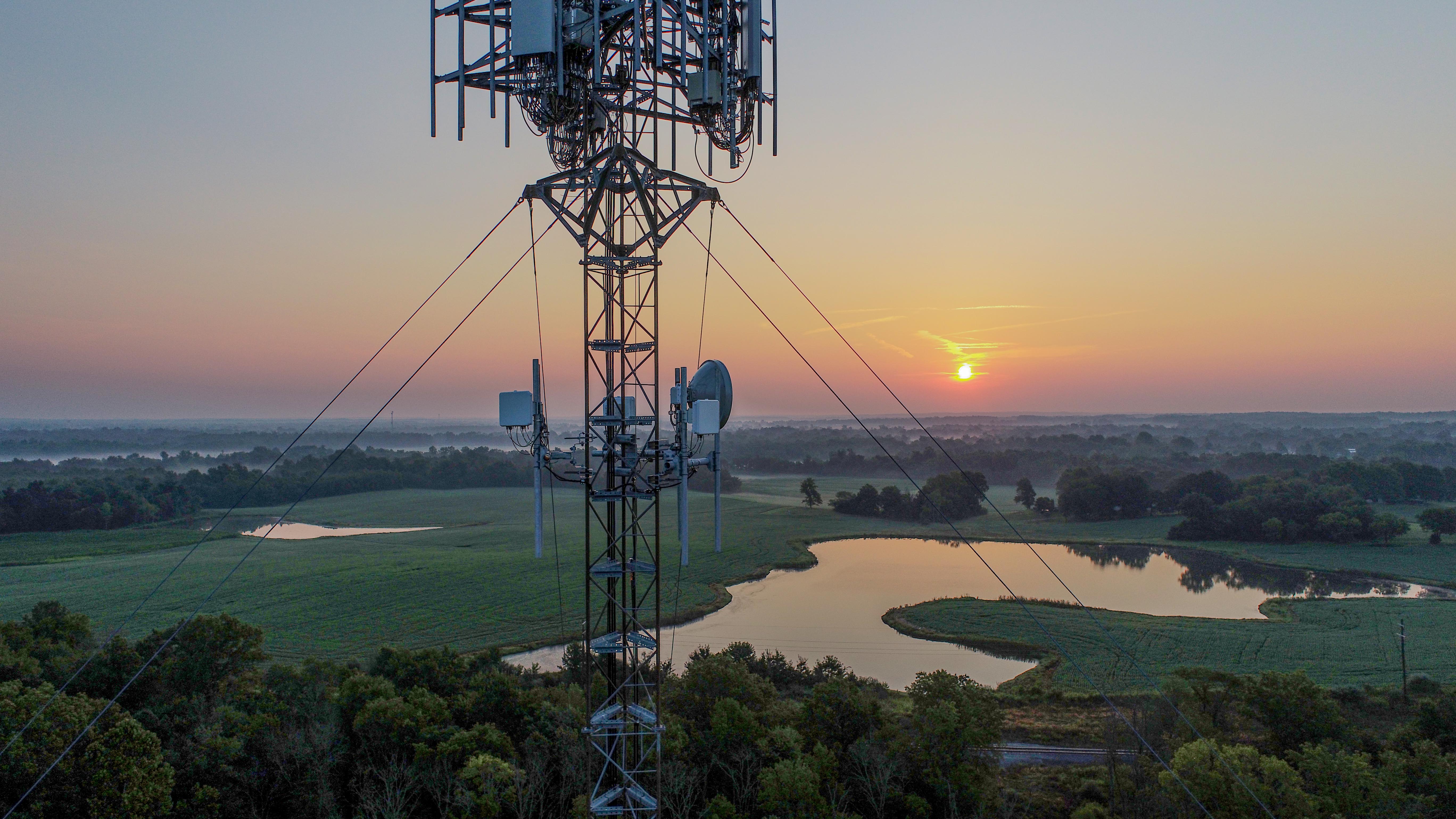When Guglielmo Marconi demonstrated the first wireless telegraph in 1896, he opened the door for wireless telecommunications. Over time, the technology has evolved for different needs and applications. Today there is a wide range of wireless standards and technologies, each designed to meet a specific design requirement.
Fixed wireless access (FWA) is a popular approach to deploying broadband services where wireline is either too costly or time-consuming. To deliver FWA, operators have made use of wireless standards and technologies such as Wi-Fi and mobile broadband (3GPP). Although both technologies can be made to serve, neither is designed specifically to address FWA.
Tarana enters the field with an entirely novel, innovative approach. Tarana Gigabit 1 (G1) uses a clean sheet approach to designing a platform expressly to meet the requirements of fixed wireless.

G1 delivers on the promise of fixed wireless through purpose-built design, both in hardware and software.
Uniform service from tower to cell edge
G1 uses a blend of innovations such as Tx/Rx digital beamforming, highly effective multipath integration, and deep RF nulls (up to 50 dB) on both ends of the link to reduce the impact of interference and signal degradation. Both ends of the link perform link optimization every 200 microseconds (5,000 times per second) to ensure the highest quality signal even when the RF environment changes due to moving vehicles, foliage movement, etc. This keeps modulations (data rates) high from tower to cell edge and consistent, even when existing RF conditions change.
This last point is critical for FWA where, unlike when a cell phone experiences poor signal quality and a user can wander to an area with better reception, users can’t simply move their houses somewhere with better coverage. Likewise, when a consumer purchases a particular service level they expect to always have that level of service regardless of where they are located or changing conditions. Both mobile broadband and Wi-Fi suffer from a poor ability to deliver the same level of service from the tower to the cell edge. Mobile broadband was not designed for a fixed application (it’s in the name “mobile” after all). Even Wi-Fi was primarily designed for mobile clients located indoors.
Interference cancellation
Whether it is other transmitters on a tower, nearby home Wi-Fi networks, or self-interference from overlapping cells, interference and noise is a fact of life for FWA. G1 uses constant monitoring and cancellation of interference from Wi-Fi networks using Asynchronous Burst Interference Cancellation (ABIC) which can detect and avoid bursty Wi-Fi interference during payload transmission. This avoids signal degradation as well as retransmissions, thereby boosting signal quality and good throughput (goodput) throughout the cell.
This, and other interference elimination techniques, unlike other wireless technologies, mean G1 is able to fully reuse spectrum (k=1). This has significant advantages for the operator. The number of subscribers, sectors, and cells can be scaled without self-interference or frequency planning, and maximize efficiency given limited amounts of spectrum. In coverage areas where most, or all, of the spectrum is already in use this can make the difference between a viable deployment and none. In cases where licensed spectrum is used (e.g. CBRS), spectrum reuse also adds cost savings.
Non-line of sight (NLoS)
Although towers are, by design, high above the ground, the other end of the link is often obstructed by other buildings, terrain, or foliage. This type of link is termed NLoS. 80% or more of FWA links are obstructed which can materially impact signal quality and data rate. G1 uses space, time, and frequency recombination of multiple signals (multipath) to get around obstacles that other technologies are unable to overcome. This allows operators to offer higher levels or service than they might otherwise as well as coverage to customers that were previously unreachable due to excessive signal degradation from NLoS pathloss.
G1 advantages versus technologies that were not purpose-built for FWA can be summarized below.

You can download this paper freely from Broadband Fixed Wireless Access: Overcoming Delivery Challenges
Compared to 5G or Wi-Fi, there’s no comparison between repurposed versus purpose-built fixed wireless. We’ll be digging into all of these technologies in more detail in the upcoming blogs.
If you just can’t wait to learn more, check out our other blogs, or reach out to us at info@taranawireless.com. We’d love to hear from you.


